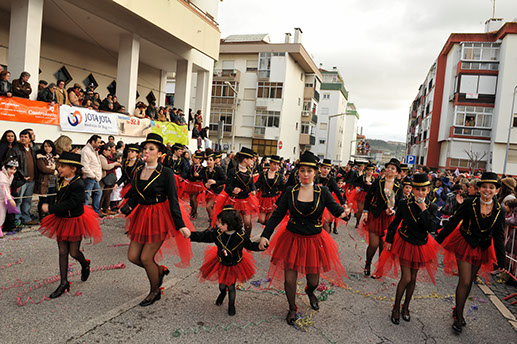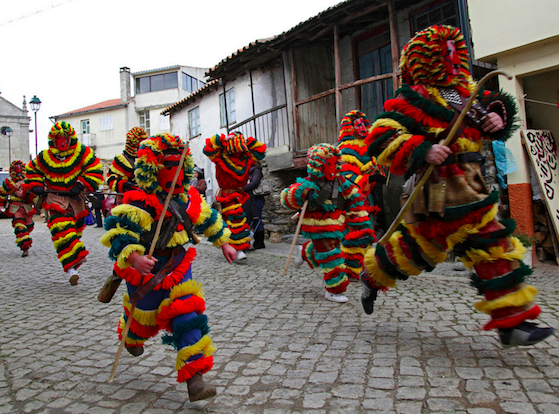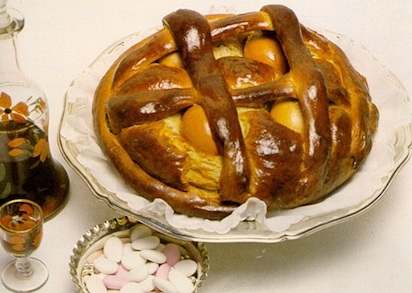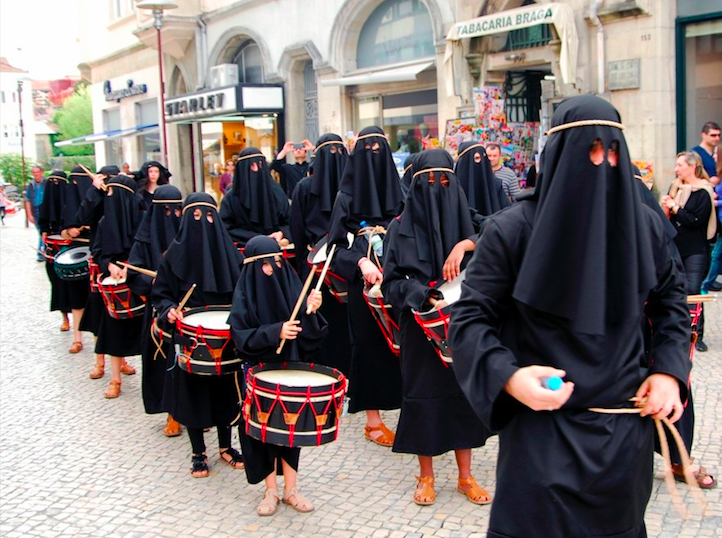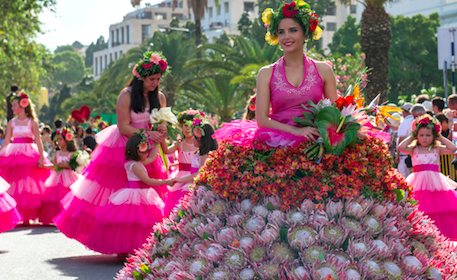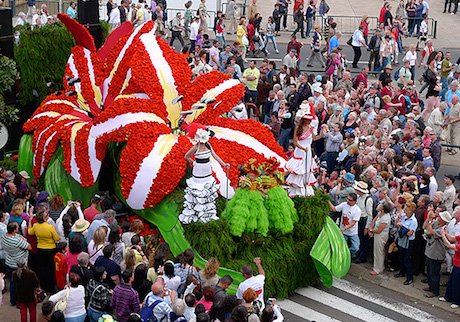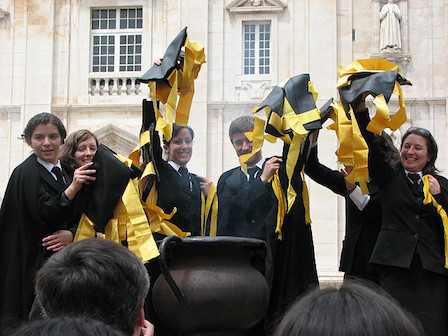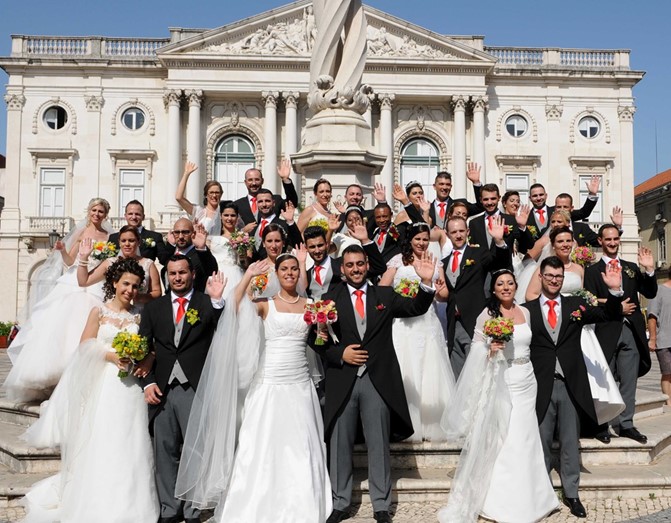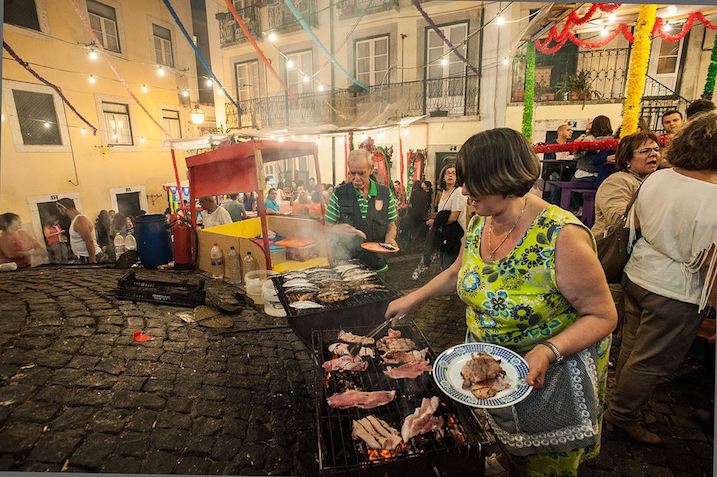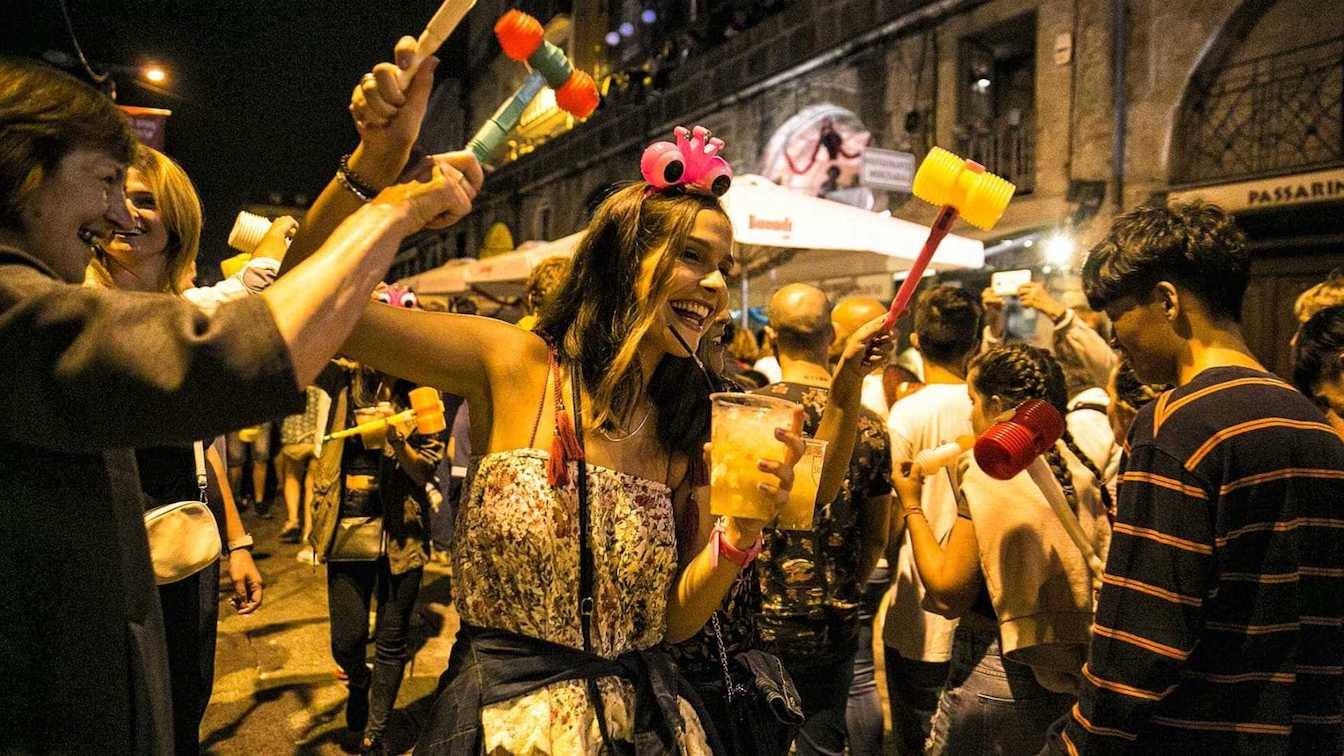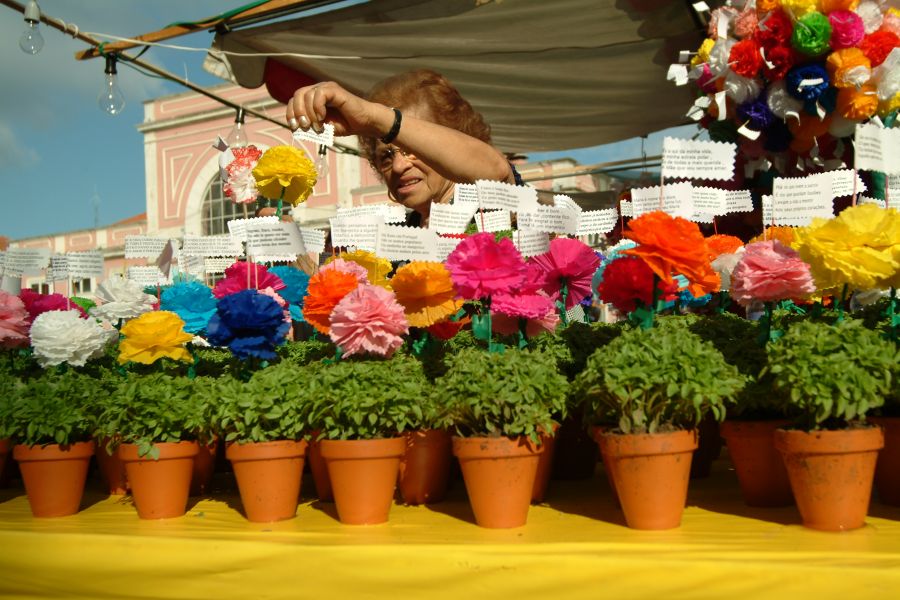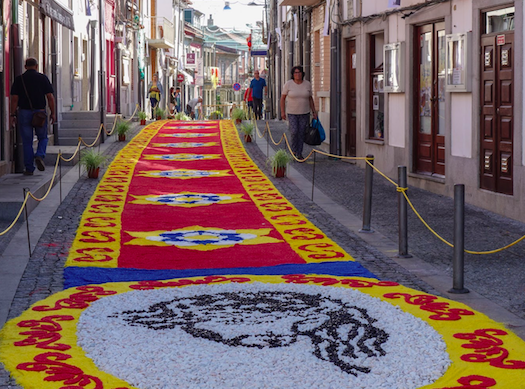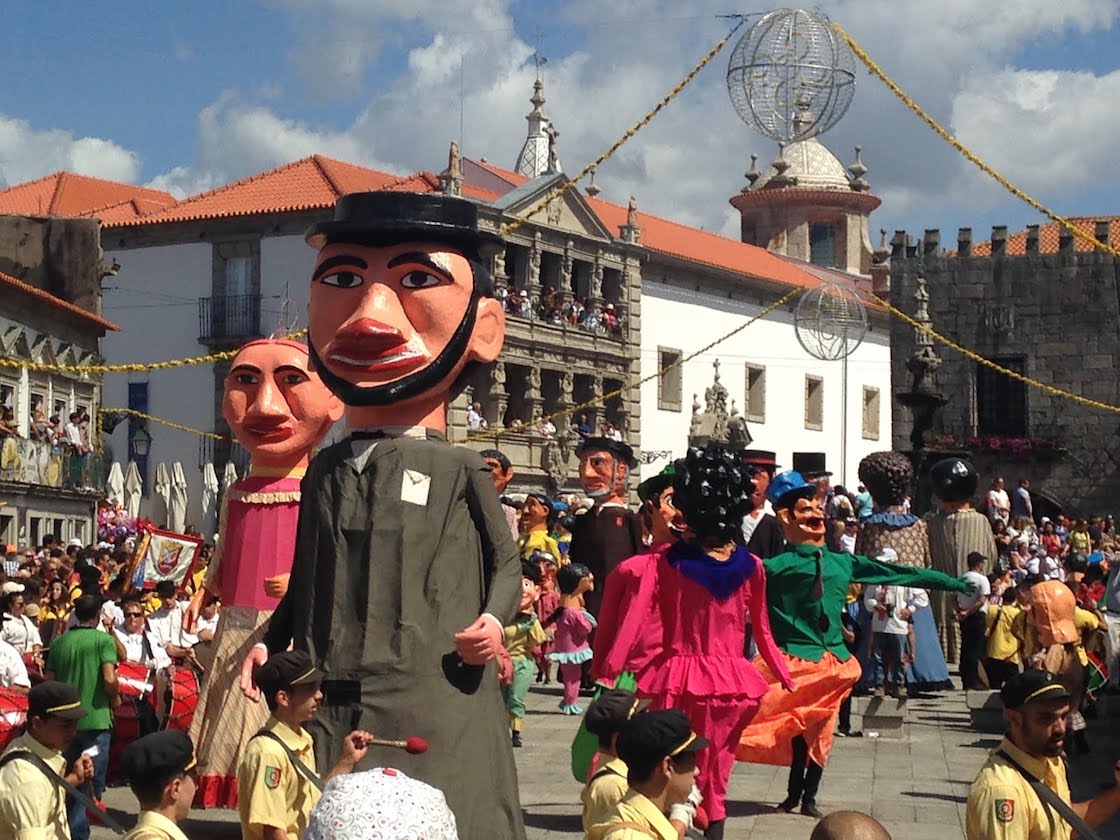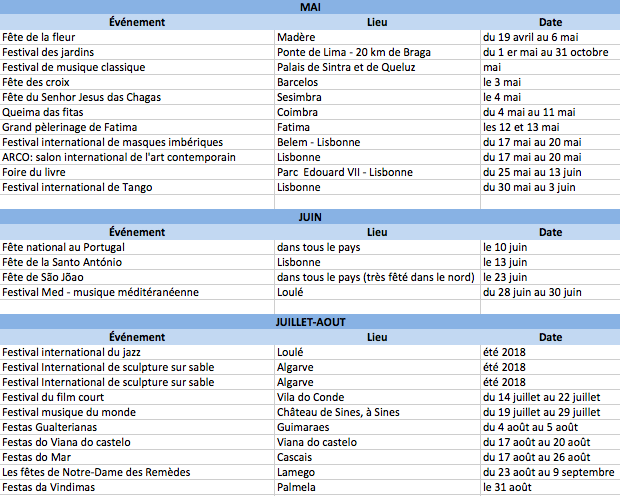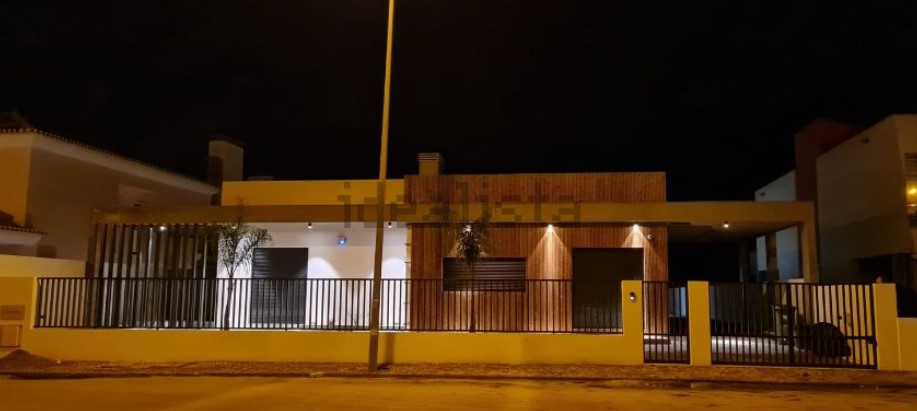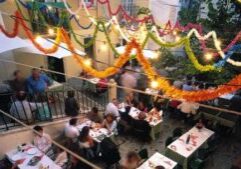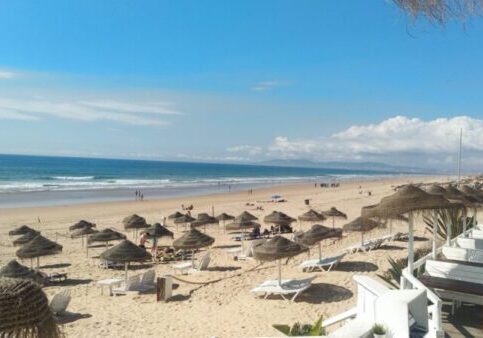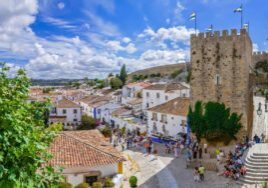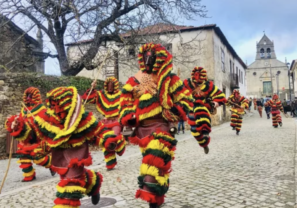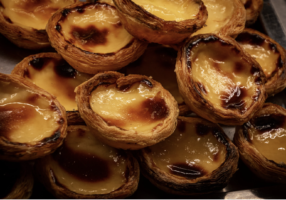Popular festivals in Portugal: 8 must-sees
![]()
Portugal is a country where traditions and customs are deeply rooted, and for me, this is one of the things that makes the country so beautiful and interesting. So it’s not surprising that popular festivals in Portugal are an integral part of the culture. The Portuguese love to go out, dance, sing, share convivial moments… And this, all year round, from north to south, with numerous festivals that punctuate Portuguese life.
In this article, I take a look back at 8 of Portugal’s most famous festivals, with a few anecdotes about them. If you get the chance, I highly recommend taking part, as these are ideal moments to immerse yourself in Portuguese culture.

1) Carnival – February
Carnival is one of the annual events that all Portuguese people talk about. It’s a highly celebrated event, taken very seriously. It takes place in mid-February and lasts around 5 days. Children have vacations, and the Portuguese often take a few days off at this time to celebrate the event. Carnival symbolizes the end of winter, the beginning of Lent, and in Portugal two terms are used to illustrate this:
- “O entrudo”, meaning “the entrance”, implying the entry into Lent.
- “Carnaval”, from the Latin “carne vale”, meaning “farewell to the flesh”, since the start of Lent is the beginning of the religious period without meat. In France, it’s known as “mardi-gras”.
Carnival is a time of joy for the Portuguese, when young and old come together. During these festivals, there are many parades, music, dancing, shows, flour and eggs thrown in the street to passers-by and, of course, masks and disguises. In fact, many people spend months preparing their costumes, and you’ll see a wide variety of disguises. The influence of Brazilian carnival can also be felt in some cities, with frenzied sambas and costumes adorned with feathers, sequins and a multitude of colors. Last but not least, you’re likely to come across “matrafonas”, men disguised as women. The “mastronças do Moulin Rouge” at the Loures carnival are the most famous(photo below).
Mastronças do Moulin Rouge at the Loures carnival.
While all the carnivals in Portugal are great fun to discover, some are more famous than others, notably those of Torres Vedras, Viana do Castelo, Loulé, Loures, Ovar, Sesimbra, Sines and Madeira. One carnival in Portugal is even a candidate for Unesco “intangible cultural heritage” status. This is the carnival of the “caretos“, in Podence(Trás-os-montes) in northern Portugal. During this carnival, young men in disguise, the ” caretos run around the town , jumping over bonfires in the evening. In a frenzied rhythm, these “caretos” announce the change of season. They wear a mask with two faces, representing winter and spring. The “ careto ” outfit is made up of several layers of colorful bangs and “chocalhos “(bells) hanging from their belts and legs.
Caretos in Podence.
If you’re in Portugal during Carnival, I highly recommend attending one. It’s a great opportunity to discover some of Portugal’s most colorful and festive cities.
2) Easter – March
Easter is a very important time in Portugal when family and friends get together. In the north of the country, Easter Monday is a public holiday, while in Lisbon and the south it’s Good Friday. The Easter visit and the gift to the godchild are two Portuguese traditions that mark Easter in Portugal.
1- The Easter visit
This tradition is still very much alive in rural areas, especially in northern Portugal. It takes place on Easter Sunday. The “Compasso”, a group of people accompanied by a priest, goes from door to door to announce the resurrection of Christ and bless the houses and those who live in them. During the visits, families prepare large tables of food, including almond jelly beans, cakes, port wine and an Easter envelope, which they give to the procession.
2- Offer a “folar
Another Portuguese Easter tradition is that of offering a “folar”, a kind of brioche, to one’s godchild. Depending on the region, the “folar” can be sweet or savory. In the Algarve, it’s sweetened with cinnamon, while in the north, it’s salted with meat. Today, the brioche has been replaced by a gift or money, but the name “folar” has stuck. In return, godchildren offer an olive branch to their godfather and violets to their godmother.
The folar with its hard-boiled eggs, accompanied by sugared almonds and Porto.
One of the Portuguese cities where Easter is particularly celebrated is Braga. For this occasion, the city is decorated with numerous ornaments and altars (the “Passos“), which are adorned with flowers and carried through the streets. On Maundy Thursday in Braga, there are two major processions: the Ecce Homo and the Enterro, during which you can see the “farricocos”, men marching barefoot, heads covered with purple or black tunics and often carrying torches.
Farricocos in Braga.
3) Madeira Flower Festival – April
The Portuguese island of Madeira, voted the world’s best island destination in 2016, is nicknamed “the island of flowers” and organizesthe “festas das flores”(flower festivals) every April. This celebration has been going on since 1954, when it was known as the “Festival of Roses”, but it has grown so much that it became the “Festival of Flowers” in 1979. The festival is punctuated by several highlights, including :
1- The “Children’s Procession
A procession of children dressed in flowers to the “Praça do Municipio”(Town Hall Square), where they build a wall of flowers in front of the town hall, known as the “muro da esperança” (wall ofhope).
Young woman in flower skirt accompanying the procession of children.
2- The Allegorical Flower Procession
This procession is made up of hundreds of extras and floats decorated with thousands of flowers. This magnificent procession moves through the streets of Funchal in a festive atmosphere reminiscent of Brazilian carnivals, with over 1,000 dancers dressed as flowers. And, of course, the sweet scent of flowers wafts through this magnificent parade.
one of the beautiful floats decorated with flowers during Madeira’s festivities.
3- Creating the flower carpets
During this beautiful festival, you can also watch and take part in the creation of splendid carpets of natural flowers in the central square of Avenida Arriaga, and admire the tropical flower exhibition at largo da Restauração.
4) Queima das fitas in Coimbra – May
Queima das fitas is a celebration of the end of Portuguese university life, held in May at the end of the academic year. This tradition exists in almost every Portuguese city with a university, but the festivities in Coimbra, the Portuguese university city par excellence, are the oldest and most renowned. These university festivities attract thousands of spectators. The Queima das Fitas salutes students at the end of their university studies. A great opportunity to get to know this student city and discover yet another Portuguese tradition. The festivities are punctuated by three major events:
1- The “queima das fitas” (burning of the ribbons)
On entering university, Portuguese students receive a ribbon(fita in Portuguese), the color of which corresponds to the discipline they are studying(yellow for medicine, red for law, light blue for science…). To symbolize the end of their student life, students burn this ribbon in a cauldron in front of Coimbra Cathedral.
Coimbra students burning their ribbons.
2- The “Serenata Monumental” (the serenade)
Still in front of the Cathedral, guitarists accompany Fado singers for a convivial moment.
3- The “cortejo” (procession)
Students dressed in their traditional black capes make their way through the streets of the city in floats decorated in the colors of each faculty. Students about to graduate, on the other hand, parade on foot, wearing hats and walking sticks in their university’s colors. It’s customary to strike the students’ top hats with the cane three times, to wish them a successful professional life.
5) La Romaria de Fátima – May
The Romarias (pilgrimages) to the Sanctuary of Our Lady of Fátima attract thousands of people. The main romaria is that of May 13, which celebrates the first apparition of Our Lady to three shepherd children in the village of Fátima in 1917. Numerous religious ceremonies take place on this occasion, particularly on the night of May 12-13. Pilgrims come to Fátima by every conceivable means of transport: donkey- or ox-drawn carts, bicycles, and some even kneel the last 200 meters to the Chapel of the Apparitions, following a marble route. It’s worth noting that in Portugal, there’s an old tradition of kneeling to make a promise to God, or to thank him. On May 13, the statue of Our Lady of Fátima is brought before the basilica, and over 500,000 pilgrims attend the celebration. In the evening, there is another torchlight procession.
Kneeling pilgrims arriving at the Sanctuary of Our Lady of Fatima.
6) Santo António celebrations in Lisbon – June
The festivities of Santo António (priest, born in Lisbon) are widely celebrated in Lisbon in June. They take place mainly in the capital’s historic districts(Graça, Mouraria, Castelo, Alfama, Bairro Alto…), which are decorated for the occasion with garlands, multicolored lanterns and pots of basil. There’s no shortage of entertainment, with concerts, fado shows, popular songs, street theater and exhibitions, to name but a few:
1- The “marchas
The famous popular marches that take place on the night of June 12-13. These take the form of marching bands and pass along the famous Avenida da Liberdade, the capital’s main thoroughfare.
2- The grand procession
On June 13, a public holiday in Lisbon, the procession departs from the Santo António church, located in the Alfama district, right next to the Sé Cathedral and built over the former house of Santo António. The procession moves through the narrow streets of Alfama, and then returns to the church.
3- Santo António weddings
It’s said that if you get married on Santo António, you’ll have a happy marriage. So, every year, 16 Lisbon couples are selected by the Lisbon Town Hall and their weddings are organized by the city. Those selected for these Santo António weddings can be found on the “Casamentos de Santo António” facebook page .
The Santo António bride and groom.
4- The altars
duringthe Santo António festivities, many altars are built, dedicated to this saint. A competition is held every year to choose the most beautiful altar. They are usually in the form of a staircase, decorated with flowers and basil, with Santo António at the top.
5- Grilled sardines
You can’t talk about the Santo António festivities without mentioning grilled sardines. In fact, the French often refer to these festivities as “les fêtes de la sardine”. Why is this? Quite simply because one of the characteristics of these festivities is the presence of barbecues set up in all the streets of Lisbon on which sardines are grilled, to be enjoyed with bread, a glass of vinho verde and a little caldo verde soup, very typical of Portuguese festivities.
Grilled meats and sardines in the streets of Lisbon.
7) São João festivities in Porto – June
The São João festivities date back to the 14th century and were originally pagan festivals marking the summer solstice, and celebrating abundance and fertility. Later, they took on religious overtones. These festivities are celebrated in large numbers all over Portugal, but the city in which they are most celebrated is Porto. São João is the city’s patron saint. The historic center is decorated with balloons and colored paper. Although the festival culminates on the night of June 23 to 24, a vast program (folk groups, popular songs, processions, street entertainment, orchestras, exhibitions, processions, etc.) takes place throughout the city in the weeks following São João. Several traditions and highlights punctuate these festivities:
1- Tapping on the head
This tradition has its roots in pagan courtship rituals. Traditionally, participants would tap the heads of girls they liked with garlic flowers or leeks, symbolizing the start of a flirtation. Today, this tradition lives on, but the garlic flowers and leeks have been replaced by soft plastic hammers, and everyone taps and gets tapped on the head during this São João evening. A little secret about this tradition: a love affair begun on São João is said to last a lifetime, so be careful who you hit on the head – one of them could be your soul mate.
People who hit each other with soft hammers during the São João.
2- Grilled sardines
As with the Santo António festivities in Lisbon, during these São João celebrations, it’s typical to enjoy grilled sardines on broa (my favorite Portuguese bread) and caldo verde soup.
3- The basil pot
It’s customary to offer a jar of basil to loved ones, supposed to bring good luck and often accompanied by a love or friendship poem. The person to whom you give it must keep the basil alive for at least a year, until the next festivities.(A little tip for keeping it alive: never water the basil directly, but put a bowl of water under the pot and let the basil absorb the water! Thatwas the gardening minute!)
A merchant selling pots of basil.
4- Fireworks
To round off the festivities, after dinner everyone heads to Avenida dos Aliados or Ribeira to watch the grand fireworks display near the mythical Douro River and Ponte Luiz I.
8) Viana do Castelo festivals – August
The Romaria (pilgrimage) of Our Lady of Agony is probably one of the most famous in Portugal. This romaria takes place over 4 days in August in Viana do Castelo, northern Portugal, and attracts large numbers of people every year. Since the 18th century, fishermen have been praying to the Virgin Mary for calm seas. Highlights of the festivities include:
1- The creation of salt carpets
theevening and night before the procession of the sea, the fishermen and their families create carpets of salt, flowers and seaweed, over which the procession of the sea passes the following day.
One of the salt carpets in the town of Viana do Castelo.
2- The cortejo (procession)
aparade designed to showcase the town’s customs. It is made up of 3,000 figures who parade for 2km through the streets of Viana do Castelo.
3- The Mordomia parade
400 local women dressed in colorful folk costumes and gold jewelry parade through the streets.
4- The “Gigantones” and “Cabeçudos” (big heads) parade
thesegiant puppets dance their way through the various processions.
The Gigantones during the Viana do Castelo festivities.
5- La serenata
ahuge fireworks display to close the festivities takes place on the century-old bridge over the River Lima.
In conclusion
As you can see, Portugal’s popular festivities are omnipresent, and I’ve only presented a small selection of them(you can check out a few others in the calendar below). I strongly recommend that you take part in some of them, you won’t be disappointed! They’re held all year round, all over Portugal.
So, tell me, which Portuguese festivals will you be taking part in?
If you liked this article, please click on the “Like” button below. And don’t forget to follow us on our social networks: our Facebook group “Amoureux du Portugal”, our Facebook page “Vivre au Portugal” and our Instagram “Vivre au Portugal”.
Receive our latest blog posts and our selection of properties for sale every month
* mandatory fieldFirst name * *Last name Telephone E-mail address * *Current city of residence Focus: *
- Buying a property in Portugal
- Renting a property in Portugal
- Nothing special in mind
Date of arrival in Portugal How can we help you? * * Please contact me:*
- Quickly please
- Later please
Region of interest *
- Almada
- Aroeira
- Seixal
- Setubal
- Other
You can view our Privacy Policy and General Terms and Conditions here
Articles Populaires
dernières annonces
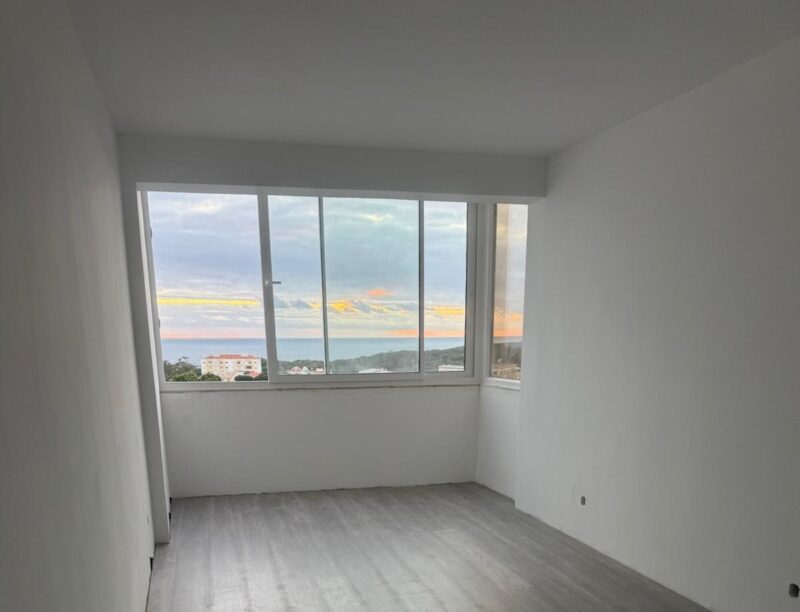
2 bedroom apartment with sea view, 10km from Lisbon and 2km from the beaches
Rua da Bica, 103Discover this magnificent 2 bedroom apartment with views of Arriba Fóssil and the sea, 2km…

Duplex apartment with sea view 15 minutes from Lisbon
rua Santa Teresa 7Bedroom + duplex apartment with sea view and 15 minutes from Lisbon.

Single-storey house with swimming pool
Just a few meters from the magnificent bay of São Martinho do Porto, lies this…
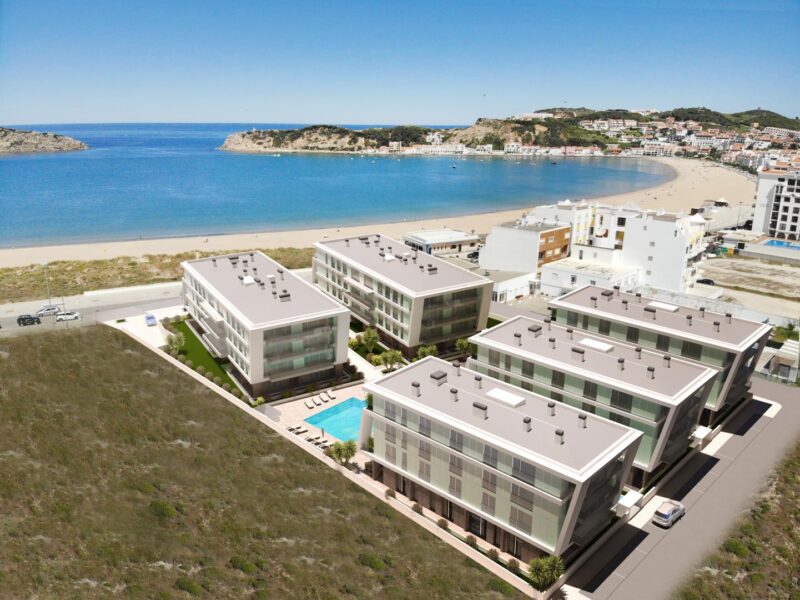
Condominium apartments facing the sea
São Martinho do PortoBeautiful apartments in São Martinho do Porto “Janela da Baía”! Located in the heart of…

Villa already finished and ready to move in: 4-suite bungalow on 750m2 plot in a quiet area of Azeitão
Rua de ParisHouse already finished and ready to move into! Close to shops and services, quick access…

Magnificent house with basement, indoor and outdoor pool in Verdizela/Aroeira
Verdizela/AroeiraNew turnkey project: magnificent single-storey villa, 498m2 in surface area, high-end finishes on a 1875m2…

Luxury apartment on the edge of a nature reserve
Your modern, spacious apartment between the beach and Lisbon’s capital. – Beach 5min – Golf…
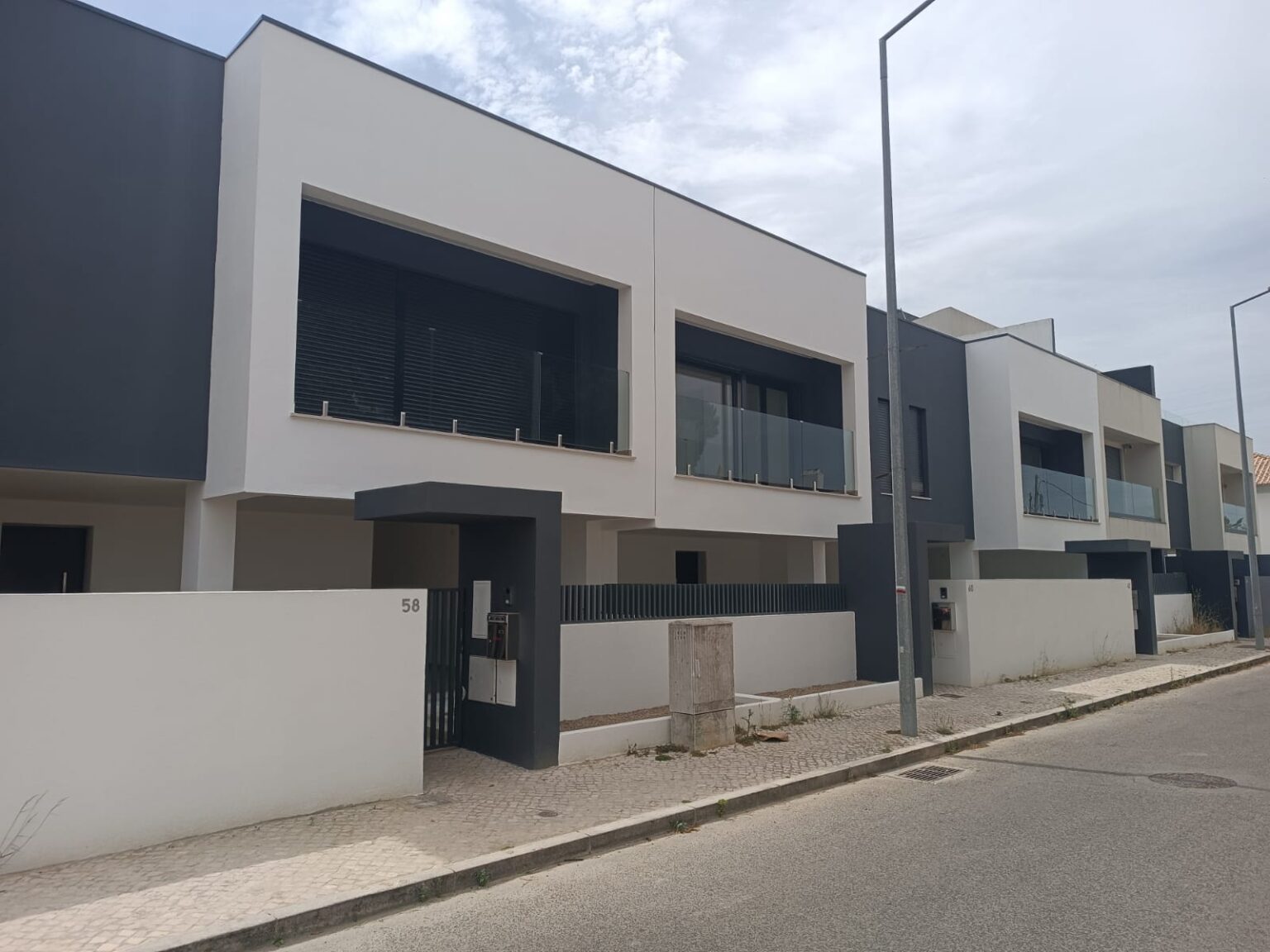
House T3 1 10 min from Lisbon and 5 min from the beaches
PêraREADY TO MOVE IN! New T3 1 ready-to-live-in house in a quiet, rural neighborhood with…

4 bedroom villa with pool and jacuzzi in Aroeira
rua são miguelModern, minimalist architect-designed house with exceptional details in a quiet location in Aroeira 2-storey house…
Inscrivez-vous à notre newsletter
Recevez chaque mois les derniers articles de notre blog "la vie au Portugal" et notre sélection de biens immobiliers à vendre.

